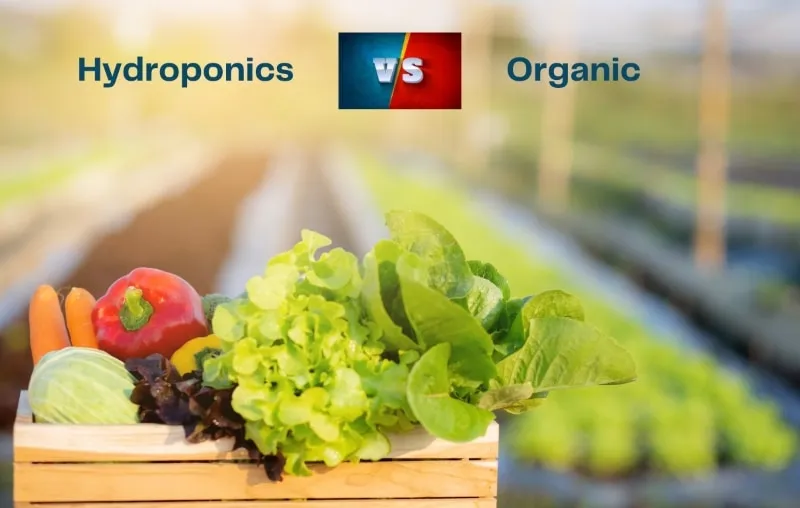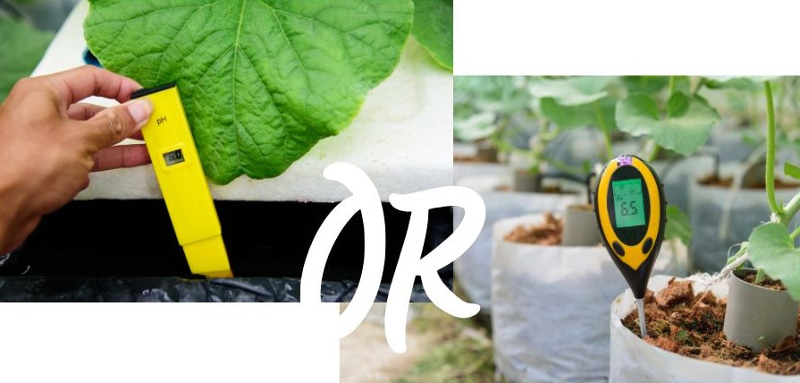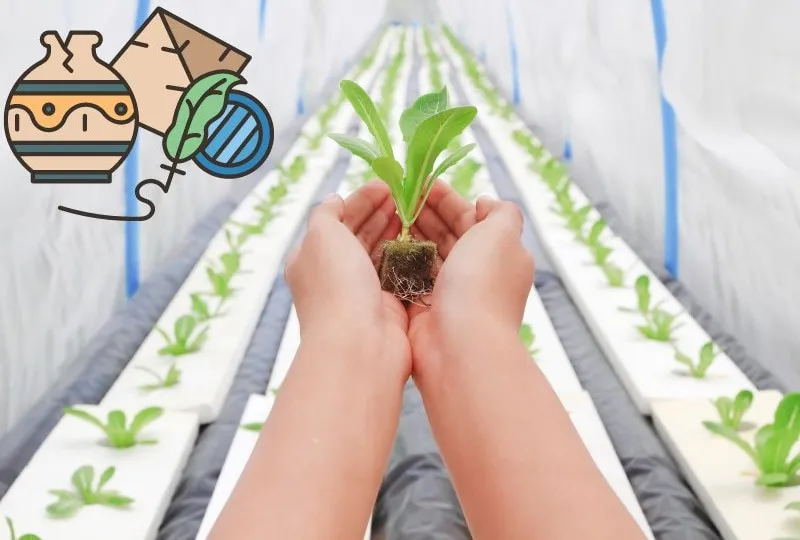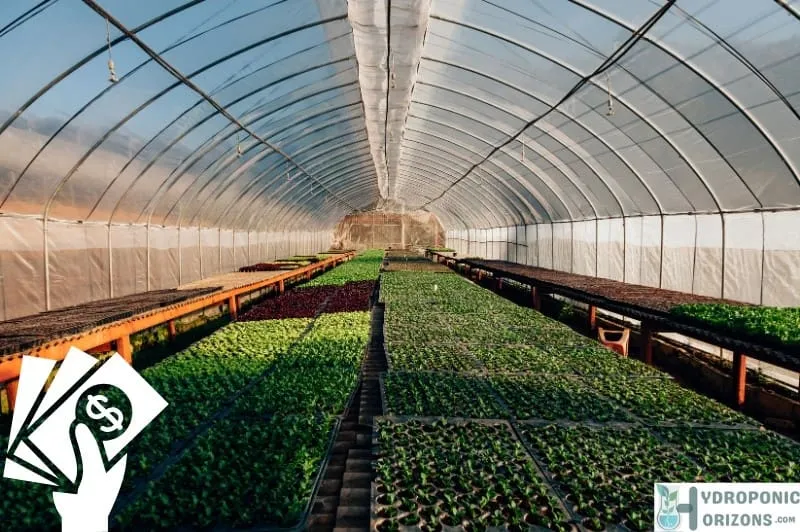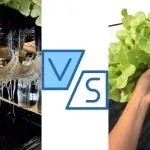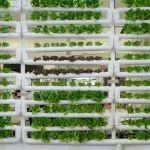Discover the fascinating world of hydroponic gardening as we unravel a burning question: do hydroponic plants grow faster? The answer to this is yes, hydroponic plants do indeed grow faster compared to soil-grown plants. The accelerated growth rate can be attributed to the plants having easier access to nutrients and oxygen, a controlled environment, and fewer pests to worry about. Studies have shown that plants grown hydroponically can grow 30%-50% faster than their soil-based counterparts.

In addition to faster growth rates, hydroponic gardening allows us to grow more plants in a smaller space and contributes to a more sustainable and environmentally friendly approach to agriculture. As we delve deeper into the world of hydroponics, it’s exciting to consider the potential impact and benefits this method of cultivation can have on our gardens and beyond! Get ready to unlock the truth about the potential for faster growth with hydroponic gardening methods.
How Much Faster Do Hydroponic Plants Grow?
In our experience, hydroponic plants can grow significantly faster than their soil-based counterparts. While the exact rate of growth can vary depending on the specific plant species and the growing conditions, it is generally estimated that hydroponic plants can grow 30-50% faster than those grown in the soil, thereby greatly reducing the time to harvest.
This increased efficiency opens up exciting possibilities for growing a wide range of plant species and maximizing our gardening efforts. Therefore, it is clear that hydroponic systems can provide significant benefits in terms of both speed and efficiency. By carefully managing and optimizing the growing environment, we can help our plants to flourish and reach their full potential more quickly than ever before.
Related: Here are several more differences between hydroponics vs soil growing.
Why Do Hydroponic Plants Grow Faster?
Optimal Growing Conditions and Controlled Environment
In a hydroponic system, we are able to provide our plants with optimal growing conditions by carefully controlling the water temperature, humidity, and lighting throughout their growth cycle. We can even adjust the intensity and duration of light exposure that our plants receive. By doing so, we help our plants grow without any disturbances, and this promotes faster growth. This means that there are no cloudy days or unexpected frosts that can slow down the growth of our plants. As a result, hydroponic plants grow faster than soil-grown plants, and we get more yield out of each plant.
Nutrient Uptake
One of the key factors that contribute to faster growth in hydroponic plants is the efficient nutrient uptake. In hydroponic systems, our plants have direct access to all the nutrients they need, which are dissolved in water. This enables them to spend less energy searching for nutrients and focus more on growing. Additionally, we can adjust the pH levels in the nutrient solution to ensure the best nutrient uptake for our plants.
By combining optimal growing conditions, a controlled environment, and efficient nutrient uptake, we help our hydroponic plants grow faster and achieve better yields.
Hydroponic Systems for Faster Growth
As enthusiasts of hydroponic gardening, we’ve seen firsthand how hydroponic plants can grow faster than their soil-based counterparts. This acceleration in growth can often be attributed to the various hydroponic systems that deliver precise water and nutrient mixes tailored to the needs of the plants. The fastest method depends on the specific plant species and environmental conditions. Even though there is no single fastest hydroponic growing method, in this section, we will explore three popular hydroponic systems that promote faster growth: Nutrient Film Technique (NFT), Ebb and Flow, and Aeroponics.
Nutrient Film Technique (NFT)
In our experience with NFT systems, we’ve realized that this method provides one of the fastest hydroponic growing conditions. NFT involves placing plants in a slightly angled grow tray with their roots exposed to a thin film of nutrient-rich water. This continuous flow of water and nutrients allows the plants to absorb the essential elements faster, making them grow at a quicker rate.
Moreover, NFT systems promote optimal pH levels, ensuring our plants like romaine and bibb lettuce remain healthy and nutrient-dense. Since the roots are constantly in contact with water and nutrients, we’ve found this method incredibly effective at speeding up the growth process.
Ebb and Flow
Another system we’ve had success with is the Ebb and Flow, which is based on the periodic flooding and draining of nutrients and water. This method allows our plants to have a well-balanced oxygenation and nutrient uptake cycle, promoting faster growth even for plants with larger root systems.
With Ebb and Flow, we grow our plants in containers filled with a medium such as perlite or coconut coir, and periodically submerge them in the nutrient-rich water solution. This exposure ensures a more efficient absorption while the draining prevents root rot, which in turn enables our plants to grow at an accelerated pace.
Aeroponics
Last but not least, Aeroponics is considered to be one of the fastest hydroponic growing methods available. In Aeroponics, plants are suspended in the air and their roots are misted with a nutrient-rich solution. This method allows for a high level of oxygenation to the roots, which promotes rapid growth and efficient nutrient uptake. Additionally, since the roots are not submerged in water, there is less risk of root rot or other soil-borne diseases. Aeroponics is often used for growing leafy greens, herbs, and other fast-growing crops, and has been shown to produce yields that are higher than traditional soil-based growing methods.
Fastest Growing Hydroponic Plants
In our experience with hydroponic gardening, we have come across several types of plants that grow particularly well in hydroponic systems. In this section, we’ll discuss the fastest growing hydroponic plants in three categories: Leafy Greens and Herbs, Fruits and Vegetables, and Flowers.
Leafy Greens and Herbs
One of the most rewarding and fast-growing categories in hydroponic gardens is leafy greens. Here are some excellent choices for your hydroponic system:
- Kale: Known for its diverse range of nutrients, kale can reach maturity in about 30-40 days in a hydroponic system.
- Mustard Greens: With their spicy flavor, mustard greens grow quickly and can be harvested in as little as 21 days.
- Swiss Chard: Another nutrient-dense leafy green, Swiss chard takes about 45-60 days to mature in hydroponic systems.
Herbs also grow well in hydroponic systems, providing fresh and fragrant additions to your favorite dishes. Some fast-growing hydroponic herbs include:
- Basil: This versatile herb can be harvested in as little as 20-30 days and is perfect for adding flavor to various recipes.
- Oregano: A classic choice for Italian dishes, oregano can grow well in hydroponics and reaches maturity in about 30-45 days.
- Coriander (also known as cilantro): This herb can be harvested in about 20-30 days and is excellent for adding freshness to various dishes.
- Mint: Growing hydroponic mint, including spearmint, peppermint, and marjoram, can also be incredibly rewarding. Mint can be harvested in around 30–40 days.
Related: Here’s a comprehensive list of easy and fast growing hydroponic plants.
Fruits and Vegetables
Hydroponic systems can also yield a bountiful harvest of fruits and vegetables. Some of the fastest growing hydroponic fruits and veggies are:
- Strawberries: They can grow well in hydroponic systems, with harvests possible in as little as 60-75 days.
- Blueberries: Although they may require some extra care, blueberries can grow successfully in hydroponics, and you can expect a harvest in about 60-70 days.
- Peppers: Both sweet and hot peppers can grow well in hydroponics, reaching maturity in about 60-90 days.
- Cucumbers: These fast-growing hydroponic vegetables can provide you with a healthy harvest in around 50-70 days.
- Tomatoes: Enjoyable fresh off the vine, hydroponic tomatoes can reach maturity in about 70-85 days. Find out how to grow hydroponic tomatoes indoors here.
Flowers
Lastly, if you want to add some color and elegance to your hydroponic garden, consider growing these fast-blooming flowers:
- Marigolds: These vibrant flowers can be grown hydroponically and typically reach maturity in about 50-60 days.
- Petunias: As lovely as they are fast-growing, petunias can bloom in a hydroponic system in approximately 60-70 days.
- Snapdragons: Known for their unique shape, snapdragons grow well in hydroponic systems and can reach maturity in about 70-80 days.
There you have it – our list of some of the fastest growing hydroponic plants in various categories.
Factors Influencing Hydroponic Plant Growth
As hydroponic plant enthusiasts ourselves, we know how important it is to create the perfect environment for our plants to achieve faster growth rates. We’ve identified several key factors that will help optimize growth in your hydroponic system: Light Requirements, Aeration and Oxygen, and Watering and Nutrient Schedule.
Light Requirements
Having the right amount of light is crucial for successful hydroponic plant growth. Plants need light to carry out photosynthesis, which is how they create energy and grow. Choosing the right grow lights for your hydroponic system can really help speed up plant growth. In fact, grow lights can lead to faster growth rates compared to relying on natural sunlight alone. For the best results, make sure you use the appropriate light spectrum, intensity, and duration for the specific plants you’re growing. Get more details about hydroponic light requirements here.
Aeration and Oxygen
In hydroponics, the amount of air and oxygen around the roots directly affects plant growth. Root aeration plays a vital role in providing oxygen to the roots, which plants need for proper cell respiration and nutrient uptake. An air pump in your hydroponic system can ensure your plants have the right balance of nutrients and oxygen. We find this particularly important when growing plants like watercress that require more oxygen at the root level.
Watering and Nutrient Schedule
Providing the correct balance of nutrients through the watering schedule is essential for faster growth in hydroponics. By carefully monitoring and adjusting the nutrient solutions, we can create the perfect growing conditions for our plants. It’s important to maintain the correct pH balance in the nutrient solutions, as this can affect the plants’ ability to absorb nutrients. Establish and stick to a proper watering schedule, and always use high-quality nutrient solutions to get the best results for your hydroponic garden. You can learn about individual system needs in our guides for an ebb and flow watering schedule and NFT watering schedule.
Remember, the key to success in hydroponic plant growth lies in optimizing these factors to create the best environment for your plants. With the right balance of light, air, and nutrients, we can all enjoy thriving, beautiful hydroponic gardens.

